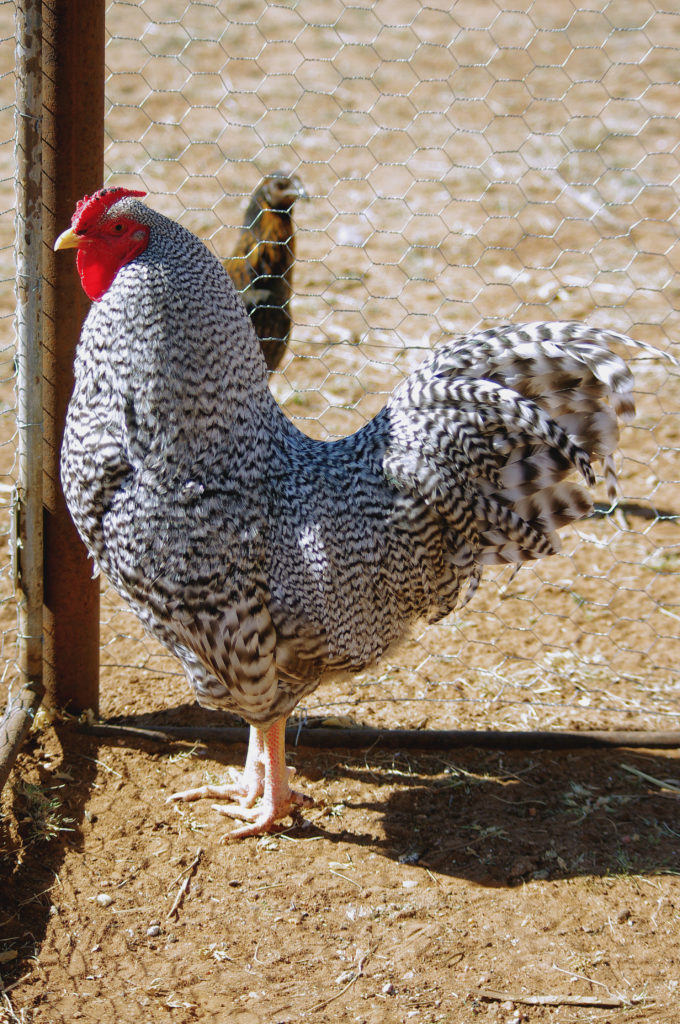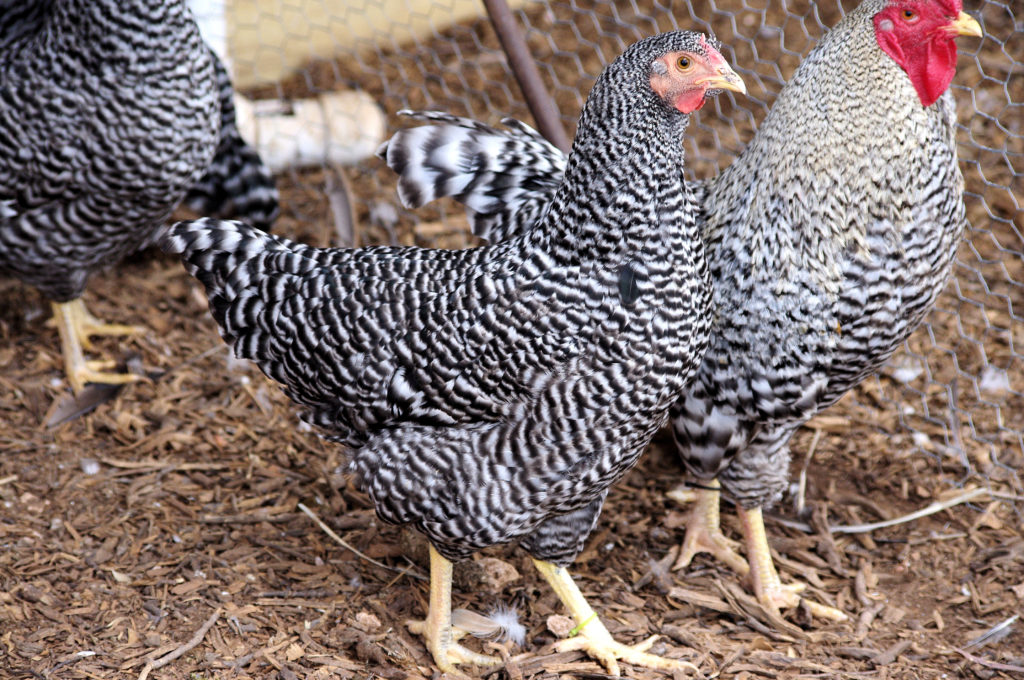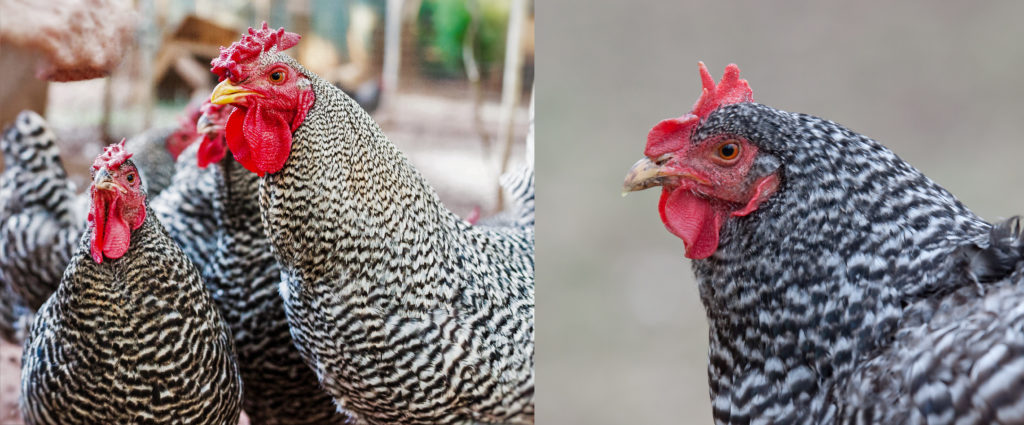Part of our Breed Profiles series, Dominiques were one of the earliest known North American developed breeds, and almost became extinct in the twentieth century.
History
Dominiques have a long history in North America as one of the earliest developed breeds, though they weren’t recognized as a distinct breed until the early 1800s. Like so many chicken breeds, their exact origins are unclear, though not without lots of colorful versions.

Dominique Rooster. Photo by The Nature Guy.
They may have been introduced to North America via the English Pilgrims and known as the Pilgrim Fowl. Or they may have come from the French colony of Saint Dominique in what is now the Dominican Republic and been called Dominickers. Whatever their origins, they were a popular multi-purpose bird in the early days of immigrant colonies in North America, used for eggs, meat, and feathers. They are weather hardy, good foragers, and reliable brooders.
The popularity of the Dominique has waxed and waned. They were admitted to the American Poultry Association’s Standard of Perfection in 1874 and remained relatively common until the 1920s when the introduction of new breeds from Asia eclipsed them. However, during the Great Depression and WWII, Dominiques were again bred in large numbers because they were hardy birds with easy dispositions.
After WWII, the poultry industry significantly ramped up production and began to work with birds specifically bred for fast growth and meat sales. According to the Livestock Conservancy, by 1970s, only four known flocks remained in the U.S.. Through a program of promotion among heritage breed enthusiasts, Dominique breeding increased in the later quarter of the 20th century, but as of 2007, the breed seems, again, to be declining.
Characteristics
Before formal breed standards were set, Dominiques had both single and rose combs. It wasn’t until the New York Poultry Society created a standard for the breed that rose combs became a recognizable feature. A true rose comb will have slightly back-facing spike at the back of the comb. The tight arrangement of the rose comb make it more resistant to frostbite.

Dominique hen and rooster. Photo by The Nature Guy.
Primary Use: They are duel-purpose (meat and egg) birds
Temperament: Perfectly Pleasant, Calm, personable, decent foragers
Size: Medium-sized bird
Egg production annually: 230-275 medium-sized
Egg Color: Brown
Average Weight: Males – 7 lbs/3.2 kg, Females – 5 lbs/2.3 kg
The medium-sized Dominique sports black and white barred feathers that overlap tightly making them comfortable in cold weather, but also able to fluff open their feathers to cool down in hot, humid climates. They have a low, broad body with full, long tail feathers that are held high.
Hens are good mothers that take good care of their chicks and have a high rate of successful hatches. Rooster are fairly aggressive in protecting their flock, but they can also be fairly friendly with humans.
Dominques don’t have any specific health issues. They are a solid heritage breed for backyard flocks and small farms, especially if you are looking for good mothers and prolific egg layers.
Dominiques and Barred Rocks
Dominiques and Barred Rocks look an awfully lot alike, but there are some easy ways to tell them apart.

Dominique hen and rooster on the left, Barred Rock hen on the right.
Comb – Dominiques have the characteristic rose comb while Barred Rocks have single combs.
Plumage – Dominiques show distinctive staggering in their plumage with finer bars while Barred Rocks have wider, darker bars with crisper edges.












